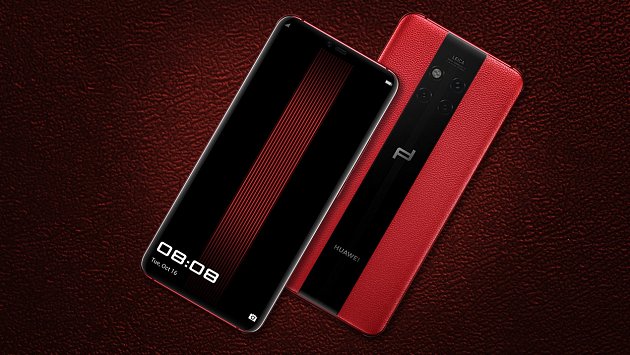Huawei recently announced a slew of new phones, including the Porsche Design Mate 20 RS, which is made of real leather. Whether or not it’s worth the sticker price (around US$1,950) is debatable. If you want additional storage—512GB versus the standard 256GB—it will cost you a whopping $2,400. Compare that to the iPhone XS, which costs about $1,349 for 512GB of storage.
The Mate 20 RS is the successor to the Huawei Porsche Design Mate 10 RS, which is just six months old. The new version includes three cameras, reports The Verge: a 40-megapixel main camera, a 20-megapixel wide-angle lens, and an 8-megapixel telephoto camera. These cameras are also available on Huawei’s Mate 20 Pro, which costs significantly less ($1,260).
Many of the phone’s internal components are comparable to the Mate 20 Pro, including the Kirin 980 chipset. The Mate 20 RS has a 6.39-inch display with 3120×1440 resolution. It runs on the Android P-based EMUI 9.0, similar to other Huawei flagship models. One new feature, HiVision, uses artificial intelligence to identify objects such as paintings and landmarks. Options to unlock the screen include facial recognition and a fingerprint sensor.
The Mate 20 RS’s battery supports fast charging with compatible wireless chargers, which cost extra to purchase. Similar to today’s iPhones, it has a water resistance rating of IP68.
The phone will be available in most regions on Nov. 16 in black only. China will have a special edition in red.
Earlier this year, Huwaei used its Mate 10 Pro phone to drive a Porsche. The company demonstrated the technology at the Mobile World Congress trade show in Barcelona, Spain. A Porsche Panamera was given more than 1 million images and the ability to recognize 1,000 objects. Attendees rode in a Panamera as it successfully evaded cardboard stand-ins for objects such as a dog and person on a bicycle. Users simply tapped a button on the phone to get the Porsche moving.
“A smartphone is already outstanding at object recognition,” noted Andrew Garrihy, Huawei’s chief marketing officer, in a video about the project. “So, we thought, could the AI that’s currently embedded in our phone pilot a car, recognize objects, instruct the car to avoid them, and could we do all of that in five weeks?”


